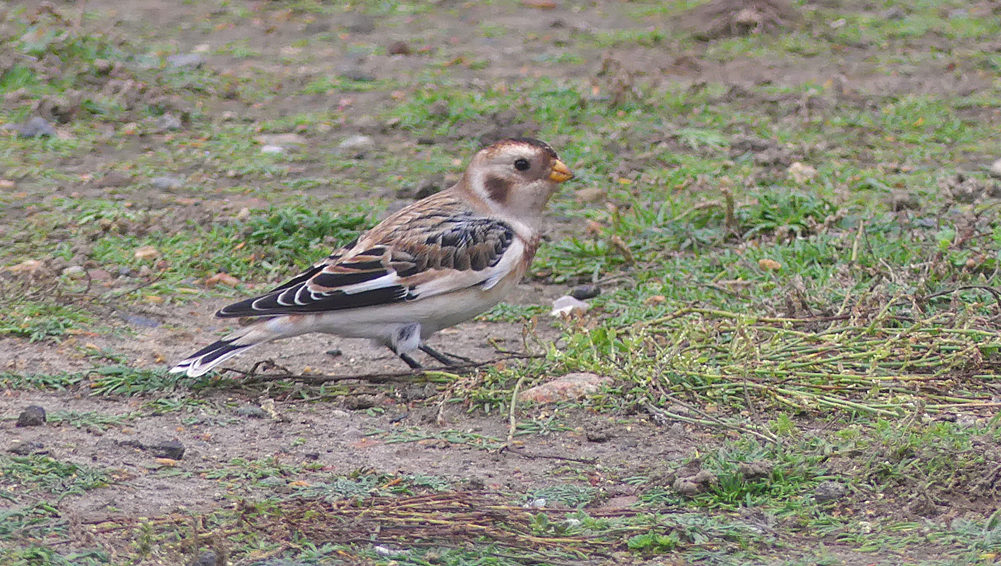Saturday 14th October 2017
/The second half of September seemed to involve a lot of effort for little reward. It was still very enjoyable birding, with migrants passing through the island but it lacked a little star quality. A Little Stint found feeding on the shore at Vazon on 18th was one of my best patch finds, but other decent birds seen on my coastal strip included a Common Gull on Vazon beach on 21st, a Whinchat at Portinfer on 23rd and a Redstart at Fort Hommet on 29th.
A couple of weekend mornings at Pleinmont didn't really bring anything more exciting. On 23rd the only visible migrants were double-figures of Yellow Wagtails feeding around the sheeps' feet, but birds of prey were putting on a fabulous show with up to 4 Marsh Harriers, 2 Buzzard, a Peregrine and a Barn Owl patrolling the fields at Mont Herault. Another visit on 30th only produced single Spotted Flycatcher and Whinchat. Lots of toil but no rares.
Buzzard and Crow - over the garden, 17 Sep 17
Little Stint - Vazon, 18 Sep 17
White Wagtail - Pulias 22 Sep 17
Over the weekend of 22nd and 23rd September there looked like decent conditions for moth migration, so I put the trap out. No proper rare moths were found but I did get a few migrants - Pearly Underwing, Delicate, Nephopterix angustella and a couple of Four-spotted Footmen. The best moth though was a new species for me and pink and yellow beaut - a Pink-barred Sallow.
Pink-barred Sallow - garden, 23 Sep 17 - a new species of moth for me.
Four-spotted Footman - female, garden, 23 Sep 17
The first week of October continued to be uneventful for me, but this was more to do with being very busy with work and family, so not really getting out birding. But we did have a nice Hobby fly south over Fort Doyle and head inland on 7th. Someone had found a Snow Bunting a few days previously feeding in the courtyard of the fort on Fort Hommet headland, and so I went to take a look after work on 9th. Despite the dull conditions I managed to get close to the bird for some decent pics. Although I would have got better ones if it wasn't for the constant stream of dog walkers walking right between the bird and me, repeatedly flushing it. What did they think I was doing lying on the floor pointing a camera? Perhaps I had become invisible? Selfish twonks!
Snow Bunting - Fort Hommet, 9 Oct 17
Snow Bunting - Fort Hommet, 9 Oct 17
Snow Bunting - Fort Hommet, 9 Oct 17
Snow Bunting - Fort Hommet, 9 Oct 17
Starling - Pulias, 13 Oct 17
Starling - Pulias, 13 Oct 17
On Saturday 14th October, I went to Herm with Wayne and Mark for a change of scenery. As usual, Herm was great to bird but apart from a good number of Firecrests in the wooded areas, we failed to find anything uncommon. However, the enjoyment at this time of year comes from not what you see, but from what you might see at any moment. You know you might turn a corner at any moment and bump into a mega! There were more birds arriving all the time though as shown by the flock of 6 Siskin we saw fly low across the sea and into the woods. The previous day, we knew that the Royal Tern had been seen here on Herm, and so we had a good look for it. We found it distantly on the offshore rocks. It looks like it is going to stay for its second winter in the Channel Islands after its summer vacation to France. You can see its moevments on the map below.
Royal Tern - Herm, 14 Oct 17
















![Buff-breasted Sandpiper, L'Eree, 9 Sep 17 [Mark Guppy]](https://images.squarespace-cdn.com/content/v1/57652e4d59cc682f752a2dc5/1511696711648-X7V7YKM3TYJTVGR4068J/BuffBSP+MAG.jpg)
![Buff-breasted Sandpiper, L'Eree, 9 Sep 17 [Mark Guppy]](https://images.squarespace-cdn.com/content/v1/57652e4d59cc682f752a2dc5/1511696749484-ILA0ZG3VKAI6F4HN8F7H/BuffBSP+MAG2.jpg)











